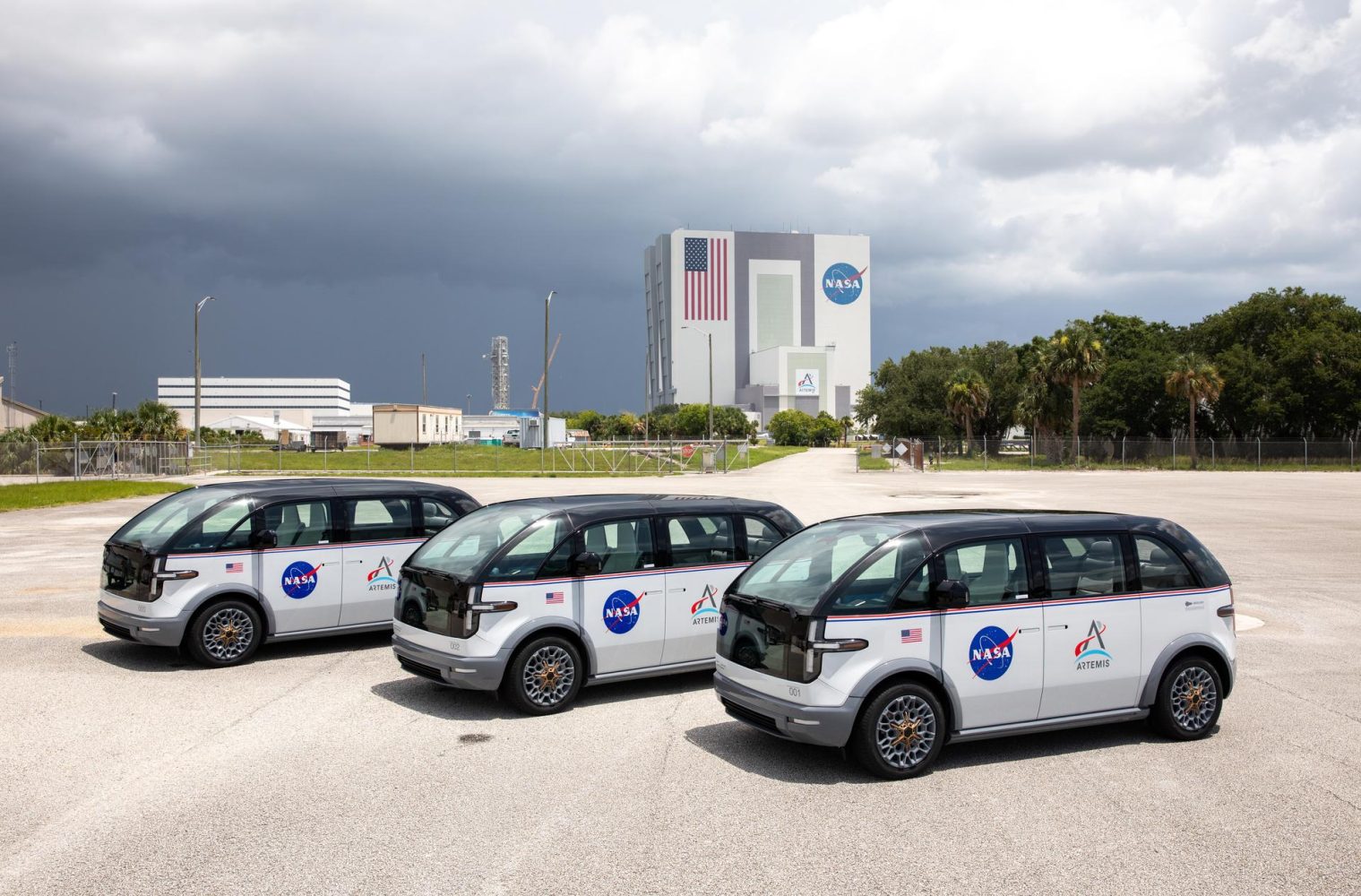
NASA’s Artemis program and the preparations for the Artemis 2 mission are in full swing. Flight hardware is arriving at NASA’s Kennedy Space Center to construct the giant SLS rocket, and crewed hardware is also being delivered. The Artemis astronauts’ first ride on launch day is now in procession of Canoo’s fully electric crew transport vehicles.
Artemis, NASA’s program aimed at returning humanity to the Moon and establishing a permanent presence, began with the launch of CAPSTONE on a Rocket Lab Electron rocket in June 2022. This mission paved the way for testing the orbit that the Orion spacecraft would follow during lunar missions. Last November, NASA launched its first Space Launch System rocket with an Orion capsule, which traveled around the Moon and returned. This mission was a full test of the rocket before the first crewed flight is scheduled for late 2024 to early 2025.
One crucial aspect of launching crew into space is transporting them to the launch pad. Throughout NASA’s history, variations of Astrovans have been used to transport crews for Mercury, Gemini, Apollo, and Shuttle missions. The most iconic of these was a modified Airstream motorhome used during the Shuttle era, capable of carrying the entire crew, with suit technicians, to LC-39A or B for launch.
For Artemis, the iconic Airstream’s shiny metal exteriors have been replaced by Canoo’s full glass roofs and electric motors. NASA has announced that it has received a fleet of three Canoo electric SUVs, which have been modified to transport Artemis crew and technicians from KSC’s Armstrong Operations and Checkout Building to LC-39B.
We are thrilled to be a part of the Artemis missions and to deliver NASA’s first zero-emission built for mission crew transportation vehicles. It’s a very proud day for Canoo and all of our partners who worked so hard to ensure we perform our part to transport the astronauts for the first nine miles of every launch.
Tony Aquila, Chairman and CEO, Canoo
Canoo was awarded the contract in April 2022, making it one of the fastest turnarounds for the Artemis Program from contract to delivery. The early delivery of these vehicles, well ahead of the Artemis 2 mission, will allow NASA teams to practice the drive to the launch pad and familiarize themselves with all the procedures involved in moving the crew.
The nine-mile journey will be the crew’s final trip on Earth before being launched towards the Moon for a duration of up to a month. The Canoo vehicles are equipped to transport astronauts fully suited in NASA’s Orion Crew Survival System, an updated version of the iconic orange flight suits worn by Shuttle crews.
Canoo’s vehicle will be NASA’s first crew transport van to be powered entirely by batteries, although it is not the first electric crew vehicle. That distinction belongs to Tesla, which operates a fleet of Model Xs for SpaceX’s crews flying on the Crew Dragon spacecraft. These vehicles are used by NASA, International Space Station partners, and commercial customers like Axiom and the Inspiration4 mission.
Unfortunately, the third component of the crew transport trident, Boeing’s “Astrovan II,” which will be used for crewed Starliner flights, is a modified Airstream Atlas and will use a traditional engine. However, the future lies in electric vehicles, and when humanity returns to the Moon, the world will witness their journey to the launch pad powered solely by electricity.
FTC: We use income earning auto affiliate links. More.




Comments